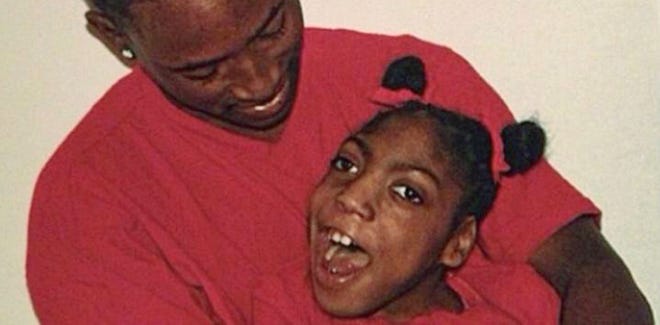Woman Found Alive in Body Bag: Risen From the Dead, Misdiagnosis, or Negligence?
Imagine you’ve just switched on your tunes, donned your PPE, and prepped your room and equipment to begin an embalming. You turn to the body bag on your table and slowly pull down the zipper. But instead of a pallid, peaceful deceased person, you open the bag to reveal a living, breathing face staring back at you, wide-eyed and terrified.
That’s what happened on August 23 at James H. Cole Funeral Home in Detroit. The incident traumatized a family and set off an explosion of questions that authorities are still trying to answer. The biggest of those is whether or not the first responders are truly at fault.
Full Arrest
When paramedics and EMT arrived at the Southland, Michigan home that Sunday morning, they found their patient, Timesha Beauchamp, not breathing. The family summoned them after finding the 20-year-old, who has cerebral palsy, unresponsive after an apparent seizure.
After 30 minutes of CPR and other measures, they could not revive Beauchamp. Three times manual and electronic checks showed no signs of life. Following protocol, the four emergency responders — all members of the Southland Fire Department — reported this data to a local hospital physician. Based on this information, the physician declared Beauchamp dead.
The Southfield Police Department contacted the Oakland County Medical Examiner’s office. They explained the death and their belief that it wasn’t due to foul play. The pathologist on duty released the Beauchamp family to call their local funeral home. Workers from Cole Funeral Home transported Beachamp to their facility around 11:25 a.m. and prepped the body for embalming.
The Questions — and Finger Pointing — Begin
“When the body bag was opened and they were getting ready to embalm the body, Timesha’s eyes were open and she was breathing,” the family’s attorney Geoffrey Fieger said during a virtual news conference.
Beauchamp had been in the body bag for approximately three hours, and was having difficulty breathing. The funeral home called the Detroit Fire Department for emergency medical services and notified the family. An ambulance transported Beauchamp to a local hospital for treatment. As of August 25, Beauchamp was on a respirator and in critical condition.
During his conference, Fieger said that perhaps the paramedics “wrongly believe(d) that Timesha had passed away … but they were wrong — terribly wrong.”
Fieger speculated that Beauchamp’s cerebral palsy “may have contributed to the medical misdiagnosis.” He also said Beauchamp’s godmother, a registered nurse, told paramedics she saw Beauchamp move and thought she detected a faint pulse. The attorney said paramedics told the family the movements were involuntary and caused by the drugs they had administered.
The Fallout
The City of Southfield placed all four responding firefighters on administrative leave. Of the four, two were paramedics with 18 and 7 years of experience. The others were emergency medical technicians in training. On August 31, the State of Michigan suspended the paramedics’ licenses, indicating it would do the same to the EMTs.
In his own press conference on August 26, Southfield Fire Chief Johnny Menifee confirmed multiple investigations are underway. The City of Southfield, the State of Michigan, the Oakland County Medical Control Authority, and others, including Fieger and Beauchamp’s family, are all trying to figure out just exactly what led to this tragedy.
Menifee reiterated the firefighters’ reports that Beauchamp was not breathing when they arrived. He also confirmed the paramedics checked the patient’s vital signs again after her godmother said she was moving and breathing.
While not defending his firefighters, Menifee did dispute some of Fieger’s comments, calling them “grossly inaccurate.” Menifee said the firefighters did not place Beauchamp in the body bag. This is not part of their procedure, nor do they carry that equipment. He also took issue with Fieger’s insinuations of discrimination leading to negligence.
A Third Option
Although Fieger has alluded to both a misdiagnosis and to the aforesaid negligence, Fire Chief Minefee suggested a third option: Lazarus syndrome. Medical News Today describes this phenomenon as “a delayed return of spontaneous circulation after CPR has ceased. In other words, patients who are pronounced dead after cardiac arrest experience an impromptu return of cardiac activity.”
Named after Lazarus of Bethany, whom Jesus brought back to life four days after his death, the syndrome was first recognized in medical literature in 1982. Since then, there have been at least 38 reported cases. Medical News Today relays the following examples:
- A 66-year-old man regained a pulse ten minutes after doctors pronounced him dead — following 17 minutes of CPR, defibrillation, and medication.
- A 78-year-old man woke up in a body bag at the morgue a day after a nurse declared him dead after she found no pulse.
- A 49-year-old woman was declared “technically dead” but opened her eyes 45 minutes later.
- A 27-year-old man endured 25 minutes of failed treatment, but a nurse later saw rhythms on the heart monitor.
Some in the medical community believe the Lazarus phenomenon is “grossly underreported,” perhaps due to the threat of lawsuits. There are several theories about what causes the syndrome, but none have been proven. To avoid the possibility of this rare happening some researchers recommend waiting at least 10 minutes after ceasing CPR to declare death.




